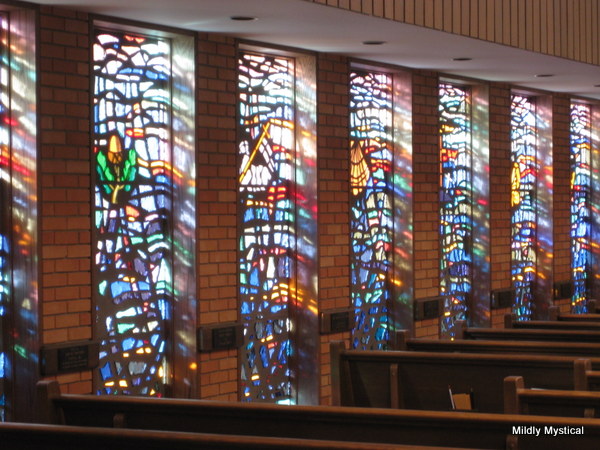At the Spiritual Directors International conference in Louisville this year, Krista Tippett spoke of beauty as a core moral value. She noted the connection of beauty and vitality, and described God as being present in beauty. She mentioned mathematicians who say that if an equation is not elegant and beautiful, it is likely not to be true.
Influenced by the late John O’Donohue, she spoke of his distinction between beauty and glamour. O’Donohue taught that Beauty is that in the presence of which we feel more alive.
As a seminary student I came to love Vermeer’s “Woman Weighing Gold” aka “Woman Holding a Balance” because the print hung outside the office door of one of my professors. During my years in school, as I stood in the hallway waiting to talk with him I was given that rich image to contemplate.
Waiting brings particular attention to our surroundings. The places where we are required to wait speak clearly about the respite beauty can offer, or the grimness of its absence. The intentional creation of welcoming space is a sign of true hospitality. A thoughtfully chosen object or image can infuse a time of waiting with beauty and grace.
Individuals and organizations who understand hospitality find ways to offer nourishment for the soul in the arrangement of their physical space. In this quiet way, they make the world better. In his book, Beauty: The Invisible Embrace, John O’Donohue says:
[beauty] calls us to feel, think, and act beautifully in the world:
to create and live a life that awakens the Beautiful.
The places where we wait are often filled with stress. We wait to be seen by the doctor, the government official, the interviewer. As we take in the space around us, we feel the presence of compassion. Or its absence. Unfortunately our culture has come to accept television screens as a way of offering hospitality in waiting areas. What a different environment we could create if those funds were spent on works by local artists. Yet far more spaces are arranged without any thought beyond offering a chair.
Where people have a choice about entering, spaces are generally more welcoming. Where people are required to show up, the setting is more likely to be utterly utilitarian, holding neither warmth nor tranquility. If, as John O’Donohue describes, we feel more alive in the presence of Beauty, then the palatable sense of beauty’s absence creates a space in which we die a little.
Buildings, and the spaces within them, are expensive. They require work and attention just to maintain. Given the investment already made in the physical facilities, why not use them well? Particularly when people are required to wait in a particular space, why not cultivate a peaceful environment that might carry through the entire workplace? Why not offer something beautiful to experience, granting a moment of tranquility in the midst of the day?
The UCC (United Church of Christ) in Washington, D.C. is an example of an intentionally hospitable space, not only for those who enter but for everyone who walks by. In the midst of a busy city, the walls of the church are made of glass so that passersby can see a small fountain inside. Simply to observe the flow of water across the stone disk and into the pool below is to feel a space opening in one’s psyche. What a gift, as well as an indication that this may be a rare place for the soul to thrive.


